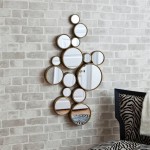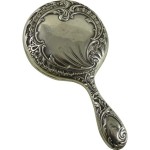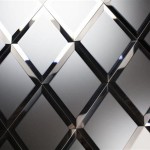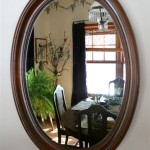Silver Mirroring Process
The silver mirroring process, also known as silvering, is a crucial technique in various industries, primarily for the production of mirrors, optical instruments, and decorative items. It involves depositing a thin layer of silver onto a surface, creating a reflective surface that can reflect light with high efficiency. The process is based on the chemical reduction of silver ions to metallic silver, which is then deposited onto the desired substrate.
Chemical Reactions and Mechanisms
The foundation of silver mirroring lies in the chemical reactions that govern the deposition process. The most commonly used method is the Tollens' reagent method, which utilizes a solution of silver nitrate (AgNO3) and ammonia (NH3) to form a diammine silver(I) complex ([Ag(NH3)2]+). This complex readily reduces to metallic silver in the presence of a reducing agent, typically a sugar such as glucose or formaldehyde. The following chemical equations illustrate the reactions involved:
AgNO3 + 2NH3 → [Ag(NH3)2]+ + NO3-
[Ag(NH3)2]+ + RCHO + 2OH- → Ag + RCOO- + 2NH3 + H2O
In these reactions, the silver ions in the complex are reduced by the aldehyde (RCHO), forming metallic silver and a carboxylate anion (RCOO-). The reducing agent, typically a sugar, provides the necessary electrons for the reduction process, while the hydroxide ions (OH-) act as catalysts.
Procedure and Variations
The silver mirroring process typically involves several steps, ensuring a uniform and reflective silver coating:
-
Substrate Preparation:
The substrate, such as glass, plastic, or metal, must be meticulously cleaned and prepared to ensure a smooth and adhesive surface for the silver deposition. -
Silvering Solution Preparation:
The silvering solution is prepared by mixing silver nitrate, ammonia, and a reducing agent in specific proportions. These solutions are often delicate and require careful preparation to ensure optimal results. -
Deposition:
The prepared substrate is immersed in the silvering solution, allowing the silver ions to reduce and deposit onto the surface. The deposition process is typically carried out in a controlled temperature environment. -
Washing and Drying:
After deposition, the substrate is thoroughly washed to remove any residual chemicals and then carefully dried. -
Protective Coating:
A protective coating, such as a lacquer or varnish, is often applied to the silver layer to prevent oxidation and enhance durability.
Variations in the silver mirroring process exist, tailored to specific applications. For instance, some techniques utilize different reducing agents or incorporate controlled electrochemical methods for silver deposition. These variations influence factors like the thickness of the silver layer, the reflectivity of the coating, and the overall quality of the mirror.
Applications and Significance
The silver mirroring process is a cornerstone technology in various fields, playing a crucial role in the following areas:
-
Mirror Production:
The primary application of silver mirroring is the manufacture of mirrors. The process creates highly reflective surfaces, making them ideal for applications including household mirrors, telescopes, and other optical instruments. -
Optical Devices:
Silver coatings are ubiquitous in optical devices such as laser cavities, spectrophotometers, and interferometers. Their high reflectivity enables accurate light manipulation and measurement. -
Decorative Applications:
The silvering process adds aesthetic appeal to various objects, including jewelry, ornaments, metalware, and decorative glassware. The reflective silver layer enhances the visual appeal and creates a lustrous finish. -
Scientific Research:
Silver mirrors play a critical role in scientific research, enabling precise light manipulation in experiments related to optics, spectroscopy, and interferometry.
The silver mirroring process has greatly impacted numerous industries, contributing to advancements in optics, technology, and aesthetics. Its ability to create highly reflective surfaces has revolutionized how we observe, measure, and interact with light, making it an essential technique in modern society.

Silver Mirroring Its Importance Formation Process And A New Elimination Procedure Rita Udina Conservació I Restauració D Obra Gràfica

Silver Mirroring Its Importance Formation Process And A New Elimination Procedure Rita Udina Conservació I Restauració D Obra Gràfica

Compound Interest Making Silver Mirrors Using Chemistry

Silver Mirror Reaction Method For Incorporation Of Agnps On Nanofibers Scientific Diagram

Scheme Showing Silver Mirror Reaction In The A Absence B Presence Scientific Diagram

Silvering Wikipedia

Silver Mirror Ion Line Overview Introduction

Watch This Artist Create A Mirror Using Glass And Silver Nitrate

Silver Mirroring Its Importance Formation Process And A New Elimination Procedure Rita Udina Conservació I Restauració D Obra Gràfica

How To Make Mirrors By Silvering Glass 8 Steps With Pictures








